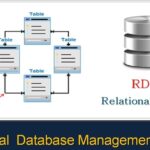In this article, we will learn about the most security risks and threats on web applications.
Firstly, security risks refers to the potential damage that an attack on a web application could cause. Also, there must be a risk analysis and risk assessment system to prevent the system from any kind of damage.
Moreover, web applications are prone to such threats because of increasing number of malicious activities. Let us take a look at some of the major security risks.

Top 6 Security Risks on Web Applications
- SQL Injection
- Cross Side Scripting (XSS)
- Broken Authentication
- Broken Access Control
- Sensitive Data Exposure
- Security Misconfiguration
SQL Injection
Firstly, it occurs when untrustworthy data is passes through interpreter as a part of query. Secondly, the attacker’s data can trick the machine or interpreter to execute unintended commands. Moreover, it can access data without user’s permission.
Where to apply?
We can apply SQL Injection to the element which is in connection with the database. For instance, SQL Injection can be occur on username or password.
Types of SQL Injection
- Boolean
- Error
- Union
- Stack
- Time
How to prevent SQL Injection?
Firstly, to prevent such type of attacks, we can use Store Procedures, Parametrized Query and not using query within code. In addition, preferred option is to use a safe API because it avoids the use of interface entirely.
Cross Side Scripting (XSS)
This type of attack is possible where javascript is used and there is no proper validation. For instance, cross side scripting is possible on a search box. Moreover, it will allow attackers to execute scripts on such search boxes.
How to prevent XSS?
To prevent XSS, convert each line of code into text. Use frameworks such as React JS. L and latest Ruby on Rails.
Broken Authentication
When the applications functions related to authentication are implemented incorrectly, such type of attack can occur. In addition, it will allow attackers to compromise with passwords, keys, tokens and exploit other flaws.
To prevent broken authentication, implement multi factor authentication to avoid credential stuffing or brute force attack and stolen credential re-use risks.
Broken Access Control
Such type of attack can occur when attacker will try to gain access of an unauthorized functionality. For instance, it can gain access to user’s files, account, change user rights and modify the data.
How to prevent it?
Implement mechanism for access control once and use it throughout the application and alert admins should be enabled.
Sensitive Data Exposure
It can occur when API is not protecting the data. Moreover, there is no encryption for the data. For instance, social media account is compromised or someone trying to access data of admin.
To prevent this, identify the sensitive data according to privacy laws and apply controls as needed. Also, make sure to encrypt all the sensitive data at rest.
Summary
In conclusion, we have learnt about the major security risks and different types of attacks that are possible.
We also learnt about ways and techniques to prevent such risks.

















[…] the hybrid architecture eliminates many of the security risks by limiting the exposure to confidential and private data to public […]
[…] and Security […]